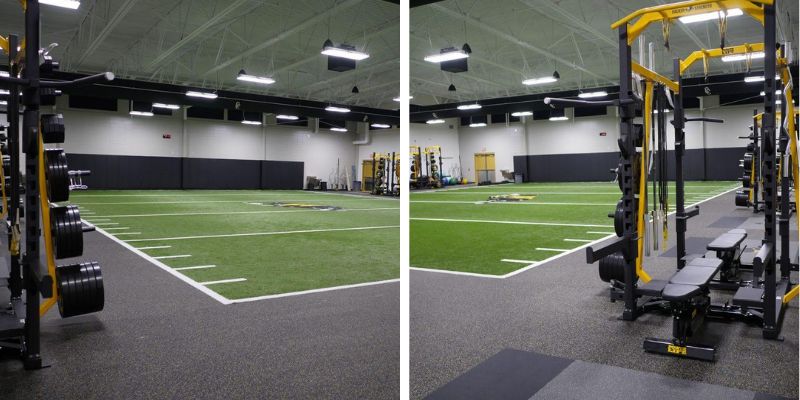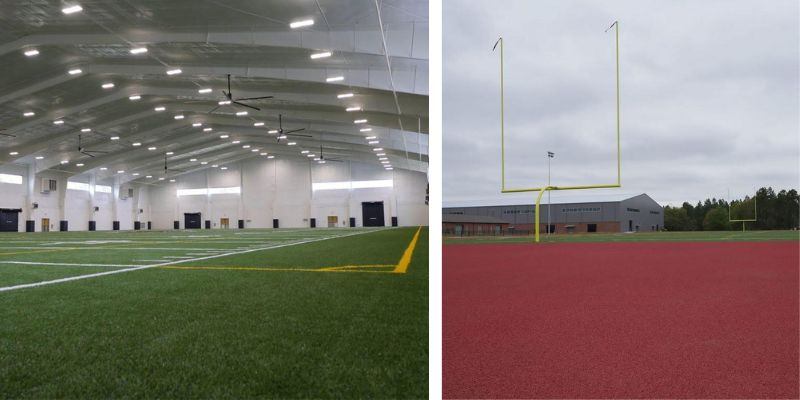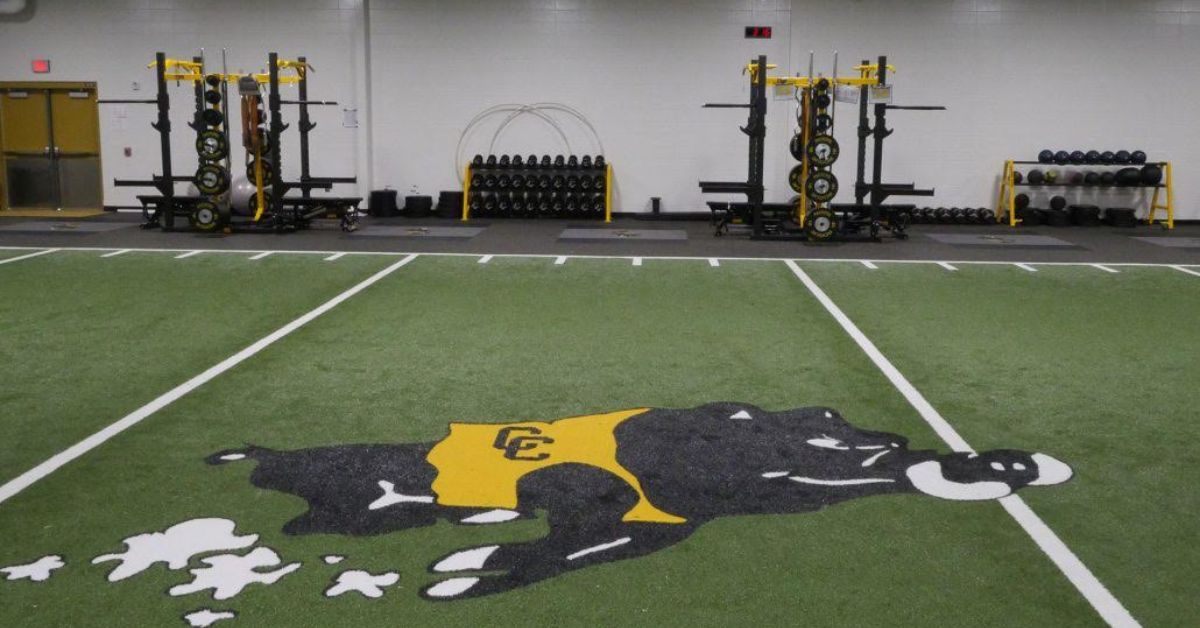Stan Luttrell is the Strength & Conditioning Coach at Colquitt County High School in Moultrie, Georgia. Coach Luttrell is an L5 Senior International coach with USA Weightlifting and a lead instructor. He also coaches football for the Packers, a perennial powerhouse in Georgia high school football.
In addition to being a head football coach for 16 years, Coach Luttrell partnered with CJ Stockel to form Team Georgia Weightlifting, which has produced numerous national championships and Olympic competitors. Coach Luttrell implemented his Olympic lifting progressions with his children, which was instrumental in them becoming elite collegiate competitors in weightlifting, rowing, and football. Beyond numerous coaching accomplishments and accolades, Coach Luttrell is passionate about supporting other coaches and the people around him as they seek to impact the lives of their student-athletes.
Freelap USA: We all say we want to teach our athletes how to train and “multiply our presence,” but time often dictates the level of technical education we can provide. How do you work the educational piece into your training blocks while ensuring you complete what you need in each session?
Stan Luttrell: This starts with our onboarding process. We call it Learn to Lift, and we complete this course with every class and every team at the beginning of each portion of the calendar year: summer, fall semester, and spring semester. The more consistently an athlete trains with us, the quicker they complete these sessions in subsequent terms because they can recall the content.
The course lays the foundation of our entire program as it teaches them the fundamental components of each lift, the philosophy of our program, and our terminology for each movement and position. Our goal in this introductory period is to teach the movements, the language, the standards, and the expectations that will support our students for not only that training cycle but also their entire athletic career. This program is the cornerstone of our long-term athletic development model.
One portion of our standards and expectations is that athletes communicate with each other, correcting each other on form and positioning and providing encouragement. Share on XWhen athletes understand the pillars of our program (expectations, standards, language, movements/ positions), we have created an environment where it is understood that every athlete knows what is expected of them and how to accomplish what is being asked of them. One portion of our standards and expectations is that athletes communicate with each other, correcting each other on form and positioning and providing encouragement. If the student knows what they are doing regarding the lifts and understands the expectation to communicate with peers to fix breakdowns, we have created a room full of coaches.
Again, this goes back to Learn to Lift. We have to address the understanding of the lifts and the expectations early to give them the chance to begin patterning what these behaviors look like. I challenge them to be good classmates and teammates by holding each other accountable.

In addition to Learn to Lift, students are given daily reminders of the technical emphasis for the lifts we will complete that day and safety reminders on correctly missing the lifts. As we transition through segments of our workouts, I add group-level reminders such as, “I saw that many of us were struggling with keeping the bar close to us throughout the lift. Remember, don’t forget scarecrow.” I try to give general statements for timely feedback that reminds the lifter and those at each rack to remain engaged and reminds athletes of our terminology as they are correcting their peers. When I do this, I try to speak in broad terms or with big technical reminders.
At the end of each day, I review the coaching points of aspects of the lifts that I saw and give them a look at what’s coming the next day so they can connect what we did today to what we are doing tomorrow. I see my role as a teacher as equally important as a coach. I was told in undergrad, “You are not a PE teacher. You are a physical educator.” This is something that has stuck with me.
I want our student-athletes to leave my classroom feeling competent and empowered in what we do. If I can effectively educate them on the technical components of what we do and establish the standards of holding each other accountable, I have multiplied my presence in a large group setting.
Freelap USA: When teaching the Olympic lifts to high school athletes, what is your teaching progression?
Stan Luttrell: In the Learn to Lift progression, we start with the feet, discussing the primary stances in weightlifting: jump stance, squat stance, and split stance. We drill our athletes’ ability to transition between each one with proper technique. Mike Burgener says 90% of the lifts are missed at the feet, so we want to spend much of our time working through these positions early so that athletes know what proper foot position feels like. Because of this, we want to ensure that ground-based training is the core of our program. We want athletes to be intentional with how their feet interact with the ground.
We want to ensure that ground-based training is the core of our program. We want athletes to be intentional with how their feet interact with the ground. Share on XFrom there, we discuss the grips of weightlifting. This may come across as a checklist, but these progressions happen simultaneously. The snatch grip is being taught as the overhead squat and snatch are being taught, and the positions are being taught within each phase, so they all build off each other rather than as a series of disconnected pieces.
We want to make sure the athletes address the bar correctly and that their starting position sets them up for a successful lift. The width of the grip is important when teaching clean and snatch grips as well as hook grips. From there, we teach the athlete how to miss properly with all of our lifts, whether overhead, from a front rack, behind, or otherwise. This ensures safety as we load and move the bar.
We teach the overhead squat because we do snatch, and the overhead squat is an excellent technical assessment of an athlete’s ability to move. It allows us to see ankle, hip, shoulder, and spinal mobility and stability throughout those joints. We also work the front and back squat positions. The front squat drives our athletes’ ability to express force violently in a front rack position, supports our positioning in the post-catch of the clean, and helps build tissues. The back squat is programmed for the stimulus we can drive from the lift.
We teach using a traditional, top-down approach, starting with the high-hang position, then the hang, and then the floor. At each starting position, we emphasize the importance of posture in the starting stance at that bar position. Once we start moving from that position, we work in a progression from pulls to high pulls, power, power to squat, and finish with receiving the bar in a full squat. Then, we move to snatch from the high hang and then to top of the knee. We pause and work a drill to focus on the scoop to transition effectively without losing the emphasis on keeping the bar close. Then, we work scoop to various positions and exercises from this progression. And then we work from the floor.
Once we have trained the snatch from each of these progressions, we work the clean from the same positions with the same emphasis as we move the starting position closer to the floor. Finally, we teach the jerk as we’ve been drilling the footwork to bring it together. Our daily warm-ups allow students to drill segments of these lifts, and we remind them of the positions and what they’re supposed to feel along the way.
We do a lift-specific warm-up each day to address and drill the movement we will focus on in class that day. Students know that we emphasize the hierarchy of the Olympic progression: positions—speed—load. I frequently tell them, “Do it right, do it fast, and then and only then, do it heavy.” This reminds them to remember the teaching progressions, how to execute each movement, and how to hold each other accountable.

Freelap USA: Creating patterns of consistency is essential for long-term athletic development. You have seen this while training your kids, who have developed into elite athletes. When introducing your kids or other children to Olympic lifts, what changes do you make to your teaching progression, if any?
Stan Luttrell: We have five kids, each of whom began lifting between 4 and 7, when they came to me and asked to start lifting. I never wanted to pressure them into lifting, but to make sure that if they were asking because they were curious about it, I fostered that curiosity and began teaching them. I taught them as any other student. We started with Learn to Lift and exaggerated the teaching progression. We tried to make training fun and teach in ways that told them the fundamentals were fun.
My wife played college soccer, and I played college football. We both wanted to instill a competitive drive in our family that prioritized athletic development, so we encouraged our kids to participate in various sports summer camps.
Camps are a short-term commitment, usually a week, and they prioritize fundamentals and games around that sport. This also allowed our kids to be instructed by quality coaches, as qualified coaches usually run the camps. Our kids did tennis, basketball, football, soccer, volleyball, gymnastics, and any camp we could get them involved in. We knew that this would let them try the sport and find what sport(s) they enjoyed, and when they found that, we wanted to foster that and help them succeed in that sport.
Freelap USA: Colquitt County High School has a top-tier football program. How do you balance being an elite football coach and an elite S&C?
Stan Luttrell: I’m very grateful to be at Colquitt. There’s a rich tradition here of a community that wants and expects to be great. I’m also grateful to have had time at other high-achieving communities throughout Georgia and to have worked with some great people along the way who supported me and helped shape the way I coach now.
I was a head coach for several years throughout my career, so I’ve had the opportunity to sit in that chair and understand the holistic approach it takes among coaches to perform at a high level consistently. It goes back to what you’re passionate about. I am passionate about football and the weight room, and both of those things have changed my life.
My parents gave me every opportunity to be successful. Football enabled me to be the first person in my family to go to college, and the only reason that was possible was the weight room. I don’t forget those opportunities; these experiences shape who I am and the intensity with which I approach coaching and preparation. The weight room and the football field are pillars of my life because they’ve both played a role in who I am. This passion drives me to build relationships with our students through teaching the weight room.
This isn’t just with football, either. My goal is to support and develop all athletes regardless of their sport and reach as many non-athletes as possible to show them the value of physical training. My commitment is to Colquitt County High School and the Moultrie community, not just the football team. I want to serve every student and push them to pursue excellence.
I have a strong desire to help people succeed, whether in football, the weight room, coaching, or something else, and my position allows me to teach the value of a strong work ethic. We tell our kids all the time, “Work wins.” I love watching kids perform at a level or accomplish something they never thought possible!
Freelap USA: What is one piece of advice you would give your 20-year-old self?
Stan Luttrell: Don’t be afraid to be different. We live in a profession where everyone wants to be the newest trend. In 2003, I decided to dive into the Olympic lifts and their value. This allowed me to play a role in developing athletes and teams to win games in which no one outside our locker room gave us a chance.
We have to have a set of beliefs that drive who we are, or else every trend that comes along throughout our career will drive us away from who we are. Share on XBecause of the attention to detail, the pursuit of consistency, and the grit built through development, our kids approached the game differently. When I think about this, I think of the old Aaron Tippin song that says, “…You’ve got to stand for something, or you’ll fall for anything.” We have to have a set of beliefs that drive who we are, or else every trend that comes along throughout our career will drive us away from who we are.
I would also add to enjoy the journey. It’s easy to grind away and look to what’s next. There are many successes in my career that I was fortunate to be blessed with, but I look back and wish I would have enjoyed the journey a bit more and spent more time with the people and the athletes who were with me along the way. I have 10 more years until I’m eligible for retirement in Georgia, and my goal is to enjoy the journey and the people along the way while still striving for excellence.
Since you’re here…
…we have a small favor to ask. More people are reading SimpliFaster than ever, and each week we bring you compelling content from coaches, sport scientists, and physiotherapists who are devoted to building better athletes. Please take a moment to share the articles on social media, engage the authors with questions and comments below, and link to articles when appropriate if you have a blog or participate on forums of related topics. — SF





